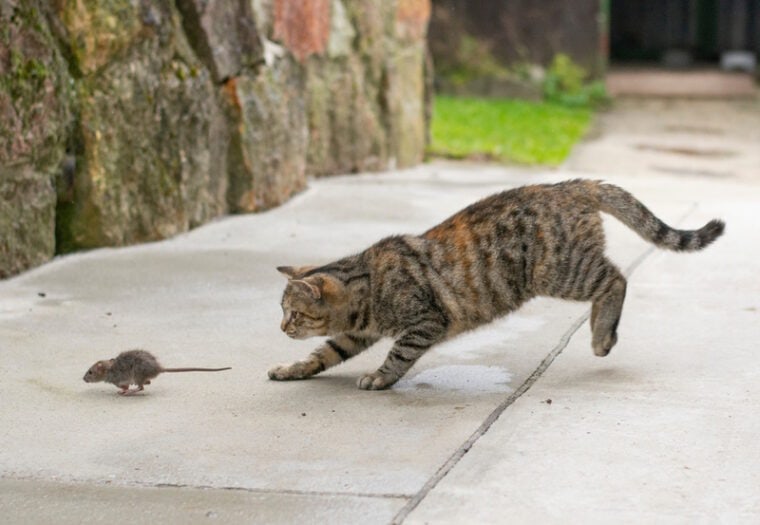
Catching mice is probably one of the first things you associate with cats. Unlike dogs, that was the one job they did for us. Research suggests humans didn’t play as significant a role as we may think in cat domestication. Many pet owners have felines as mousers to continue this tradition.
However, cats aren’t as successful as you may think. Scientists estimate that our feline companions are only successful about 32% of the time. Nevertheless, some breeds are better than others, partly due to selective breeding. Rearing is another critical variable. Research has shown the instinct kicks in around 4–5 weeks. A lack of exposure by 5 months may nullify this behavior.
So, if we want our furry friends to catch mice for us, which breeds are the best? Let’s find out.
The 10 Best Cat Breeds for Catching Mice
1. Abyssinian
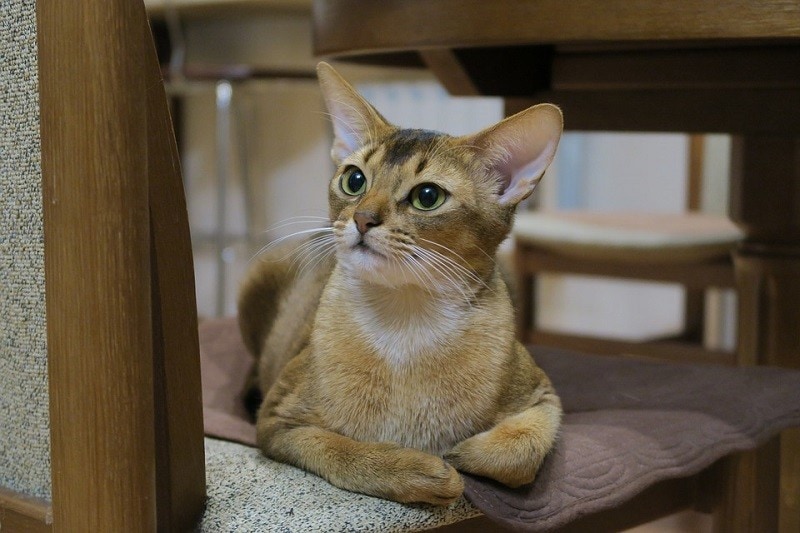
| Origin: | Ancient breed of unknown origin |
| Size: | 6–12 pounds |
| Temperament: | Affectionate, active, athletic |
The Abyssinian tops our list of the best mousers based on its intelligence and energy. This cat is always on the move. It resembles its wild counterpart, so making this assessment is not a leap of faith. It’s also a curious and alert feline, which are helpful traits for this job. Research supports this assertion and identifies it as less fearful. This cat is more likely to investigate the scratching sounds of a mouse.
2. Turkish Van
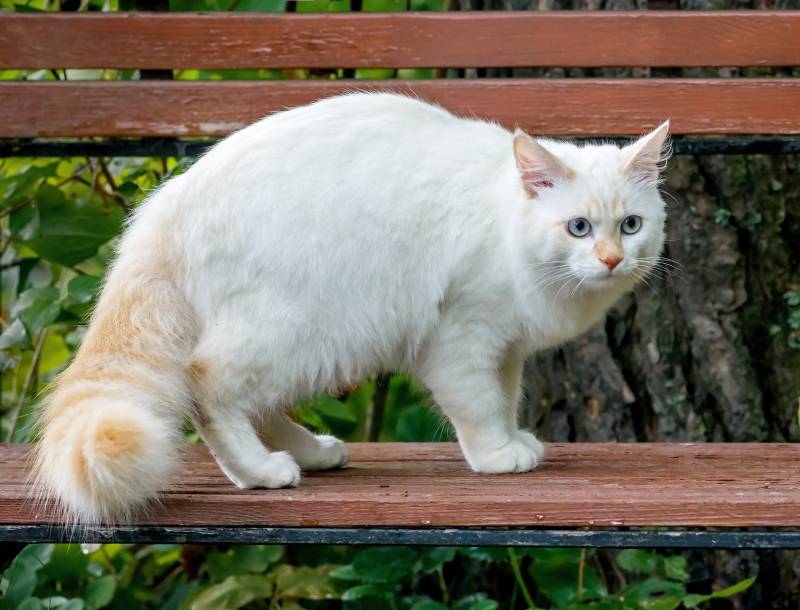
| Origin: | Turkey |
| Size: | Over 12 pounds |
| Temperament: | Intelligent, loyal, mischievous |
The Turkish Van is as tough as the environment from which it originates. It’s a slow-developing animal that is intelligent and active. Research has shown this breed to be the most aggressive among the tested felines. That trait can give it an edge when hunting mice. Its size is another asset to help it overpower its prey. It can be mischievous and make anything a game, including catching mice.
3. Maine Coon

| Origin: | Maine |
| Size: | 12–22 pounds |
| Temperament: | Intelligent, sweet, playful |
The Maine Coon is a gentle giant among felines. Its size gives it a competitive edge when hunting. Its coloration is another advantage for providing excellent camouflage. They often alert their owners of finding prey by making a chirping sound. The Maine Coon can tolerate extreme conditions better than many cats. They also have a water-resistant coat.
4. Bengal
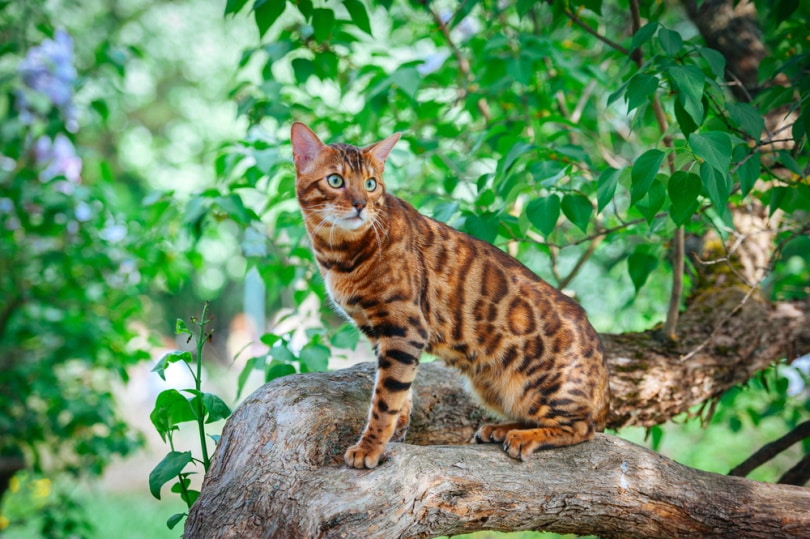
| Origin: | USA |
| Size: | 6–15 pounds |
| Temperament: | Playful |
Bengals look like ocelots with their unique coloration. The comparison is justifiable, given one of the breed’s parents is the Asian Leopard Cat. The hunting instinct is well-established in this feline. They are also curious animals, which opens up more opportunities for finding mice. Selective breeding tamed the cat’s aggression, but its playful nature and excellent climbing ability from its wild ancestor remain.
5. Turkish Angora
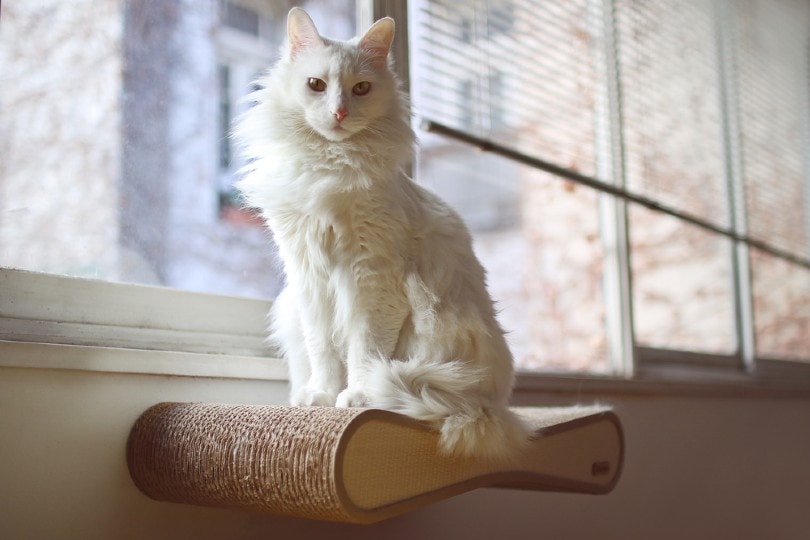
| Origin: | Turkey |
| Size: | 5–9 pounds |
| Temperament: | Energetic, intelligent, playful |
Research has shown the Turkish Angora is a playful cat. Catching mice is another way these felines indulge in mental stimulation. It is a sleek and agile animal. It is also an intelligent feline that comes in handy during the hunt. The Turkish Angora is athletic and has no problems exploring every inch of its world. Selective breeding has flavored the white cat with blue eyes.
6. Siamese

| Origin: | Thailand (formerly Siam) |
| Size: | 5–12 pounds |
| Temperament: | Vocal, intelligent |
The Siamese is a highly intelligent animal that needs mental stimulation for optimal health. Catching mice will suffice and test their hunting skills. This breed is less cat-like than many others. It is highly social and vocal. You should provide your pet with plenty of toys if rodents aren’t abundant. After all, it doesn’t take long for them to figure out a predator is present and avoid occupied spaces.
7. Burmese

| Origin: | Myanmar (formerly Burma) |
| Size: | 8–12 pounds |
| Temperament: | Intelligent |
Shy cats might not search and attack prey as readily as more outgoing animals. That’s where the Burmese succeeds. Research supports this assertion, as it’s an asset for the hunt. Its intelligence is another advantage. Its personality is similar to the Siamese, with the same needs for mental stimulation and companionship. You should provide interactive toys for your pet if the mice are scarce.
8. American Shorthair
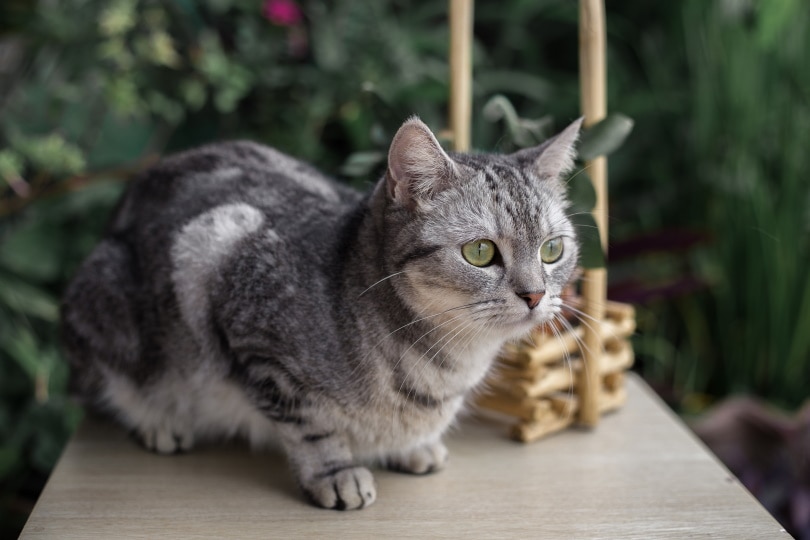
| Origin: | USA |
| Size: | 7–12 pounds |
| Temperament: | Curious, gentle, laidback |
The American Shorthair endeared itself to the first European settlers with its superior hunting ability. People appreciated its talent for catching mice. Those instincts still run deep in this cat, although selective breeding has brought out the breed’s gentle nature. While it’s not a lap cat, the American Shorthair is definitely a people-oriented animal that will earn its keep.
9. Ocicat
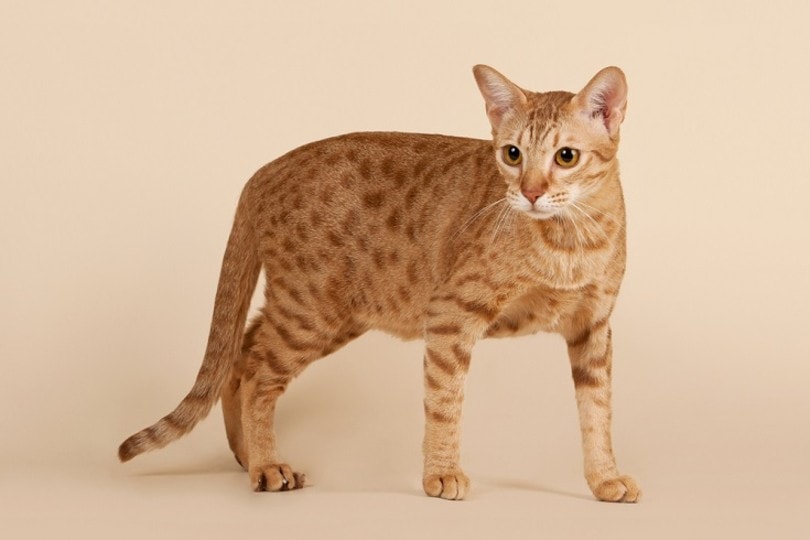
| Origin: | USA |
| Size: | 6–15 pounds |
| Temperament: | Friendly, active, playful |
The Ocicat brings together the Abyssinian’s curiosity and playfulness with the Siamese’s intelligence and the American Shorthair’s friendly disposition. Woe to the mouse that crosses its path! This cat is easy to train and intelligent to learn tricks. It has the energy and curiosity to make it an excellent hunter. It’s fitting, given its ocelot-like appearance.
10. Domestic Mixed-Breed Cat

| Origin: | USA |
| Size: | 6–15 pounds |
| Temperament: | Curious, active, playful |
The domestic mixed-breed cat is probably one of the best mousers on our list. While some benefit from having a pet around the house, barn cats serve a valuable purpose for farmers. Perhaps kittens from an unexpected litter can step up to the plate. Feral or community cats benefit from the early exposure to rodents and the ability to imitate their mothers and littermates.
Pros and Cons of Mousers
Pros
Of course, the primary benefit of having a cat that catches mice is pest control. Rodents carry diseases and parasites that can adversely affect pets and people. They also have financial costs that make managing nuisance animal populations essential. The US pesticide market was worth $14.3 billion in 2012. Experts estimate it will increase by over 83% by 2023. Cats have an important role to play.
Cons
We discussed how cats’ instinct to hunt develops as young kittens. However, the key is exposure to prey to establish it. It also comes at a price. Mice are an intermediate host for a type of tapeworm that could infect your pet. Their risk of other parasites increases if they ingest the rodents they catch.
We’ve assumed that cats have been the sole means of control. However, a pet that eats mice that have ingested rodenticides is also at risk for their deadly effects. While second-generation products kill pests quickly, first-generation pesticides that take longer are still available. Just because you’re not using one doesn’t mean a neighbor with a mouse problem has them in their home and yard.
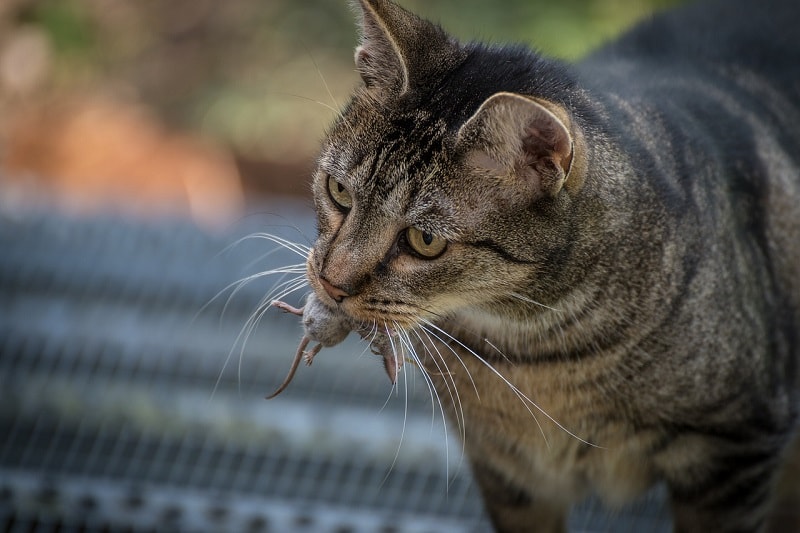
Conclusion
Mousing is what cats do best. They are carnivores that hunt to survive. The instinct exists in all felines. However, some breeds excel at it because their personalities give them a competitive edge. The wild card is the animal’s upbringing. Exposure is the trigger that brings out the predator in your pet. Genetics also plays a role in whether you have a natural mouser.
Featured Image Credit: Stefan_Sutka, Shutterstock






